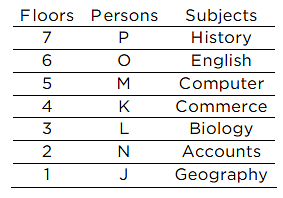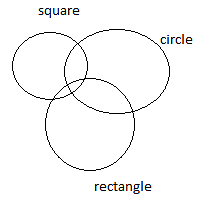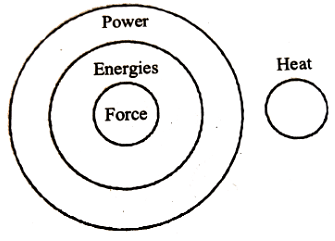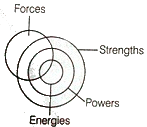Practice Mock Test for SNAP - 7 - CAT MCQ
30 Questions MCQ Test - Practice Mock Test for SNAP - 7
Directions: Read sentence to find out whether there is any grammatical error in it. The sentences are In three separate parts and each one is labelled (a), (b), (c) and (d). In that case, letter (d) will signify a ‘No error’ response.
Directions: Spot the error part of the following sentences.
Directions: Find out the error part of the following sentences.
Directions: Read sentence to find out whether there is any grammatical error in it. The sentences are In three separate parts and each one is labelled (a), (b), (c) and (d). In that case, letter (d) will signify a ‘No error’ response.
Directions: Spot the error part of the following sentences.
Directions: Select the most effective word from the options given below to fill in the blank and complete the sentence meaningfully. (Collective nouns)
Q. A _____________ of eggs.
Directions: Choose the correct alternative which can be substituted for the below given word/ sentence.
Q. Cultivation, management, and study of individual trees is called as __________
Directions: Rearrange the following parts (1, 2, 3, 4 and 5) in proper sequence to obtain a correct sentence.
(1) influenced life around the world, including
(2) developed devices that greatly
(3) phonograph, motion picture camera
(4) Thomas Alva Edison
(5) and the electric light bulb
Directions: Choose the word or group of words which is most similar in meaning to the word given below.
Impetuous
Directions: Choose the word or group of words which is most similar in meaning to the word given below.
Clandestine
Directions: Choose the word or group of words which is most opposite in meaning to the word given below.
Ensconce
Directions: Choose the word or group of words which is most opposite in meaning to the word given below.
Gumption
Directions: The given sentence is in active/ passive voice. Change the voice of the sentence. Select the correct option from the sentence below.
Q. She bought a pearl necklace.
Highbrow is related to Cultivated as Suave is related to _____?
Four of the following five are alike in a certain way and so form a group. Which is the one that does not belong to that group?
Directions: In these questions, relationship between different elements is shown in the statements. The statements are followed by conclusions. Study the conclusions based on the given statements and select the appropriate answer.
Statement: W ≥ D < M < P < A = F
Conclusions:
I. F > D
II. P < W
How many such pairs of letters are there in the word SEQUENTIAL, each of which has as many letters between them in the word (in both forward and backward directions) as in the English alphabetical series?
Directions: Study the arrangement carefully and answer the questions given below.
7 1 2 8 2 5 2 7 5 6 4 9 1 9 2 4 1 4 6 4 5 3 2 6 3 7 8 5 9 3 1 5 8 2 7
Q. How many such 2’s are there in the above arrangement, each of which is immediately preceded by a perfect square? (1 is also a perfect square)
Directions: Study the arrangement carefully and answer the questions given below.
7 1 2 8 2 5 2 7 5 6 4 9 1 9 2 4 1 4 6 4 5 3 2 6 3 7 8 5 9 3 1 5 8 2 7
Q. What is the difference between the digit which is seventh from the left end and the digit which is eleventh from the right end of the arrangement?
Directions: Study the given information and answer the questions
A word and number arrangement machine when given an input line of words and numbers rearranges them following a particular rule. The following is an illustration of input and rearrangement. (All the numbers are two-digit numbers)
Input 16 today 32 waiting 21 are 11 people 46 bus 66 long
Step I 16 today 32 waiting 21 11 people 46 bus 66 long are
Step II 16 today 32 waiting 21 people 46 bus 66 long 11 are
Step III 16 today 32 waiting 21 people 46 66 long bus 11 are
Step IV today 32 waiting 21 people 46 66 long 16 bus 11 are
Step V today 32 waiting people 46 66 21 long 16 bus 11 are
Step VI today 32 waiting 46 66 people 21 long 16 bus 11 are
Step VII today waiting 46 66 32 people 21 long 16 bus 11 are
Step VIII waiting 46 66 today 32 people 21 long 16 bus 11 are
Step IX waiting 66 46 today 32 people 21 long 16 bus 11 are
Step X 66 waiting 46 today 32 people 21 long 16 bus 11 are
Step X is the last step of the arrangement of the above input as the intended arrangement is obtained. Now, answer the questions based on the following input. Input 23 you 13 wake 81 me 43 before 72 go 34 up
Q. The following stands for which step of the rearrangement? You wake 81 43 72 34 up me 23 go 13 before
Directions: Study the given information and answer the questions.
A word and number arrangement machine when given an input line of words and numbers rearranges them following a particular rule in each step. The following is an illustration of input and rearrangement. (All the numbers are two-digit numbers)
Input 11 day 34 night 93 pace 27 easy 44 joy
Step I 93 11 day 34 night pace 27 easy 44 joy
Step II 93 11 34 night pace 27 easy 44 joy day
Step III 93 44 11 34 night pace 27 easy joy day
Step IV 93 44 11 34 night pace 27 joy day easy
Step V 93 44 34 11 night pace 27 joy day easy
Step VI 93 44 34 11 night pace 27 day easy joy
Step VII 93 44 34 27 11 night pace day easy joy
Step VIII 93 44 34 27 11 pace day easy joy night
Step IX 93 44 34 27 11 day easy joy night pace
Step IX is the last step of the arrangement of the above input as the intended arrangement is obtained. As per rules following in the above steps, find out in each of the questions the appropriate step for the given input.
Input class 25 war 15 race 73 heap 58 just 88 take 38
Q. What is the position of ‘war’ in step VII?
Directions: Each of the question below consists of a question and two statements numbered I and II given below it. You have to decide whether the data given in the statements are sufficient to answer the questions. Read both the statements and choose the most appropriate option.
Q. How many persons are standing between L and K in straight line of 19 persons?
Note: All are standing in a straight line, facing north.
I. Y stands on the extreme left of the line. Only five persons stand between Y and K. Only six persons stand between K and R. Only four persons stand between R and L.
II. J stands exactly in the middle of the line. Only two persons stand between I and J. only five persons stand between I and L. I stands to the left of L. K stands third to the left of J.
Directions: Study the given information carefully and answer the question.
J, K, L, M, N, O, and P live on seven different floors of a building but not necessarily in the same order. The lowermost floor of the building is numbered 1, the one above that is numbered 2, and so on till the topmost floor is numbered 7. Each one of them also likes a different subject namely – English, History, Commerce, Biology, Accounts, Geography, and Computers (but not necessarily in the same order.)
-
J lives on an odd-numbered floor but not on the floor numbered 3.
-
The one who like Accounts lives immediately above J. Only two people live between M and the one who like Accounts.
-
The one who likes History lives on one of the odd-numbered floors above M.
-
Only three people live between L and the one who likes Commerce lives immediately above L.
-
The one who likes English lives immediately above the one who likes computers.
-
P lives on an odd-numbered floor
-
Only one person lives between K and N.
-
K lives on one of the floors above N.
-
J does not like biology.
-
N does not like Commerce.
Q. Which of the following statements is true concerning the given arrangement?
Directions: In these questions two/three statements followed by two conclusions numbered I and II have been given. You have to take the given statements to be true even, if they seem to be at variance from commonly known facts and then decide which of the given conclusions logically follows from the given statements disregarding commonly known facts.
Statements
Some circles are rectangles.
All squares are rectangles.
Conclusions
I. Atleast some squares are circles.
II. All rectangles are circles.
Directions: In each question below a statement is given followed by two courses of action numbered I and II. A course of action is a practicable and feasible step or administrative decision to be taken for follow-up, improvement, or further action in regard to the problem, Policy etc. On the basis of the information given in the statement, you have to assume everything in the statement to be true, and decide which of suggested courses of action logically follow(s) for pursuing.
Statement
Many private schools have been violating government directives and have been charging more fees than the specified limits.
Courses of Action
I. The Government should identify such schools and take stringent actions against them.
II. The Government should not limit school fees and keep it flexible for the schools to decide.
Directions: In each question below a statement is given followed by two assumptions / inferences numbered I and II Answer
Statements
Please use public transport to avoid traffic congestion during the Trade Fair.
Assumptions
I. Only private, vehicles cause traffic congestion.
II. Many people possess private vehicles.
Directions: In each question below a statement is given followed by two assumptions / inferences numbered I and II.
Statements
Conveyance facility provided by organisation helps employees report to work on time.
Assumptions
I. The conveyance facility which is provide by the organisation always reaches on time.
II. It is not possible to report to work on time unless conveyance facility is provided by the organisation.
Directions: In these question two/three statements followed by two conclusions numbered I and II have been given. You have to take the given statements to be true even, if they seem to be at variance from commonly known facts and then decide which of the given conclusions logically follows from the given statements disregarding commonly known facts.
Statements
Some forces are energies.
All energies are powers.
All powers are strengths.
Conclusions
I. All forces being powers is a possibility.
II. All powers are energies.
Directions: In these questions two/three statements followed by two conclusions numbered I and II have been given. You have to take the given statements to be true even, if they seem to be at variance from commonly known facts and then decide which of the given conclusions logically follows from the given statements disregarding commonly known facts.
Statements
Some forces are energies.
All energies are powers.
All powers are strengths.
Conclusions
I. Atleast some forces are strengths.
II. All energies are strengths.

























